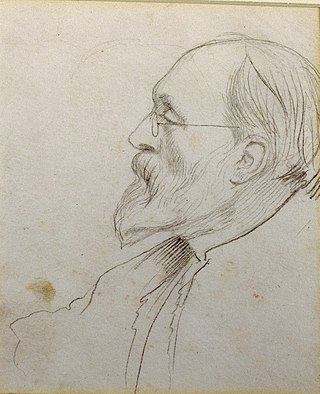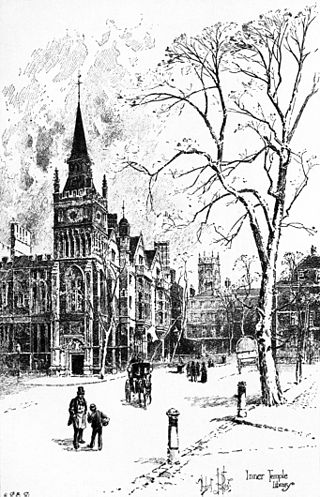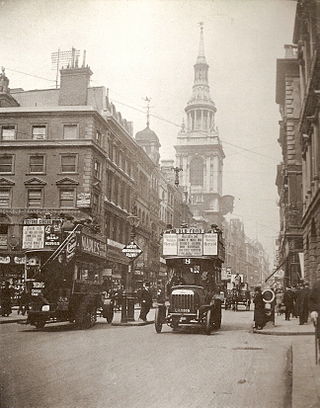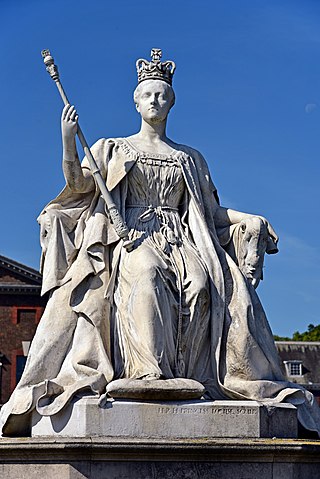
The British Museum is a public museum dedicated to human history, art and culture located in the Bloomsbury area of London. Its permanent collection of eight million works is the largest in the world. It documents the story of human culture from its beginnings to the present. Established in 1753, the British Museum was the first public national museum to cover all fields of knowledge.

Sir Robert Eric Mortimer Wheeler CH CIE MC TD was a British archaeologist and officer in the British Army. Over the course of his career, he served as Director of both the National Museum of Wales and London Museum, Director-General of the Archaeological Survey of India, and the founder and Honorary Director of the Institute of Archaeology in London, in addition to writing twenty-four books on archaeological subjects.

The Imperial War Museum (IWM), currently branded "Imperial War Museums", is a British national museum. It is headquartered in London, with five branches in England. Founded as the Imperial War Museum in 1917, it was intended to record the civil and military war effort and sacrifice of the United Kingdom and its Empire during the First World War. The museum's remit has since expanded to include all conflicts in which British or Commonwealth forces have been involved since 1914. As of 2012, the museum aims "to provide for, and to encourage, the study and understanding of the history of modern war and 'wartime experience'."

Birmingham Museum and Art Gallery (BM&AG) is a museum and art gallery in Birmingham, England. It has a collection of international importance covering fine art, ceramics, metalwork, jewellery, natural history, archaeology, ethnography, local history and industrial history.

The Worshipful Company of Clockmakers was established under a Royal Charter granted by King Charles I in 1631. It ranks sixty-first among the livery companies of the City of London, and comes under the jurisdiction of the Privy Council. The company established a library and its museum in 1813, which is the oldest specific collection of clocks and watches worldwide. This is administered by the company's affiliated charity, the Clockmakers' Charity, and is presently housed on the second floor of London's Science Museum. The modern aims of the company and its museum are charitable and educational, in particular to promote and preserve clockmaking and watchmaking, which as of 2019 were added to the HCA Red List of Endangered Crafts.

The London Museum is a museum in London, covering the history of the city from prehistoric to modern times, with a particular focus on social history. The Museum of London was formed in 1976 by amalgamating the collection previously held by the City Corporation at the Guildhall Museum and that of the London Museum. From 1976 to 2022, its main site was in the City of London on London Wall, close to the Barbican Centre, part of the Barbican complex of buildings created in the 1960s and '70s to redevelop a bomb-damaged area of the city. In 2015, the museum revealed plans to move to the General Market Building at the nearby Smithfield site. Reasons for the proposed move included the claim that the current site was difficult for visitors to find, and that by expanding, from 17,000 square metres to 27,000, a greater proportion of the museum's collection could be placed on display. In December 2022, the museum permanently closed its site at London Wall in preparation for reopening in 2026 at Smithfield Market. The museum changed its name and branding to the London Museum in July 2024 in advance of the move.

Kensington Palace is a royal residence set in Kensington Gardens, in the Royal Borough of Kensington and Chelsea in London, England. It has been a residence of the British royal family since the 17th century, and is currently the official London residence of the Prince and Princess of Wales, the Duke and Duchess of Gloucester, the Duke and Duchess of Kent, Prince and Princess Michael of Kent and Princess Eugenie and her husband Jack Brooksbank and their two sons. Kensington Palace is sometimes used as a metonym for the offices of royals who officially reside there.

Lancaster House is a mansion on The Mall in the St James's district in the West End of London. Adjacent to The Green Park, it is next to Clarence House and St James's Palace, as much of the site was once part of the palace grounds. Initially planned for Prince Frederick, Duke of York and Albany, it was ultimately completed by the Duke of Sutherland, then Marquess of Stafford, as an aristocratic townhouse in the early 19th century, and known for its lavish interiors. Gifted to the government in the early 20th century, it houses the government's wine cellars and was home to the London Museum until World War II. Now used for diplomatic receptions and related functions by the Foreign Office, it is a historic Grade I listed building, and its interiors are sometimes used in films or television as a stand in for Buckingham Palace.

The Clockmakers' Museum in London, England, is believed to be the oldest collection specifically of clocks and watches in the world. The collection belongs to and is administered by the Clockmakers’ Charity, affiliated to the Worshipful Company of Clockmakers, founded in 1631 by Royal Charter. Since 2015 it has been housed in a gallery provided by the Science Museum in South Kensington, having formerly been located in the Guildhall complex in the City of London since 1874, where it first opened to the public. Admission is free.

The Royal Archives, also known as the King's or Queen's Archives, is a division of The Royal Household of the Sovereign of the United Kingdom. It is operationally under the control of the Keeper of the Royal Archives, who is customarily the Private Secretary to the Sovereign. Although sovereigns have kept records for centuries, the Royal Archives was formally established as recently as 1912 and occupies part of the Round Tower of Windsor Castle. Since the Royal Archives are privately owned, requests for public access must be approved based on the needs and qualifications of the researcher.

The Leighton House Museum is an art museum and historic house in the Holland Park area of the Royal Borough of Kensington and Chelsea in west London.

George James Howard, 9th Earl of Carlisle, known as George Howard until 1889, was an English aristocrat, peer, politician, and painter. He was the last Earl of Carlisle to own Castle Howard.

The Inner Temple Library is a private law library in London, England, serving barristers, judges, and students on the Bar Professional Training Course. Its parent body is the Honourable Society of the Inner Temple, one of the four Inns of Court.

The National Museum of Scotland in Edinburgh, Scotland is a museum of Scottish history and culture.

George Knapton (1698–1778) was an English portrait painter and the first portraitist for the Society of Dilettanti in the 1740s. He became Surveyor and Keeper of the King's Pictures from 1765 to 1778.
Tessa Wheeler was an archaeologist who made a significant contribution to excavation techniques and contributed to the setting up of major British archaeological institutions after the Second World War.

Edward Bowring Stephens, was a British sculptor from Devon. He was honorary secretary of the Institute of Sculptors circa 1861.

The Cheapside Hoard is a hoard of jewellery from the late 16th and early 17th centuries, discovered in 1912 by workmen using a pickaxe to excavate in a cellar at 30–32 Cheapside in London, on the corner with Friday Street. They found a buried wooden box containing more than 400 pieces of Elizabethan and Jacobean jewellery, including rings, brooches and chains, with bright coloured gemstones and enamelled gold settings, together with toadstones, cameos, scent bottles, fan holders, crystal tankards and a salt cellar.

A statue of Queen Victoria stands near Kensington Palace. It was sculpted by Victoria's fourth daughter Princess Louise, Duchess of Argyll and erected in 1893. The statue was made from white marble on a Portland stone base. It depicts Victoria aged 18, seated in her coronation robes, resembling the painting of Victoria at her coronation by Sir George Hayter. The statue received a Grade II listing in 1969.
Margot Eates was a British art historian and curator who led the London Museum through the second world war.


















